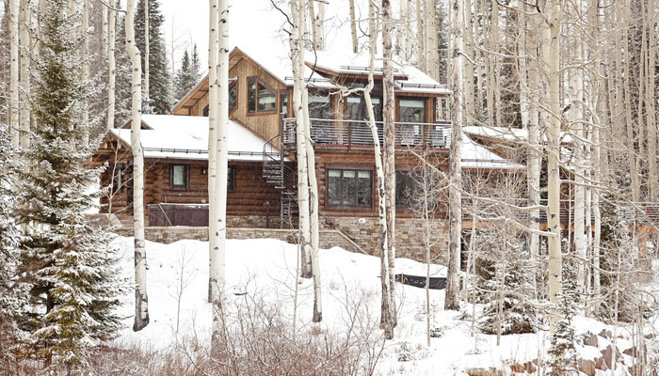
When I was asked to write about winterizing gardens, I had to laugh. I live just outside the desert in California! I don't do much winterizing. This is an area of gardening I had to research, and my research showed me how different our country's regions can be. This is what I learned about winterizing an East Coast garden and how it compares to winterizing my garden, which is zone 9-10.
East Coast: Tidy Up
With the first snow of the season fast approaching, if it hasn't already hit, now is the time to do a final, aggressive weeding and remove from the garden all spent stalks, plants, and foliage. Doing this now gives your yard a neat appearance and will make your spring planting infinitely more enjoyable. Also, from what I read, blankets of snow trap pests and diseases, creating a natural Petri dish for them to hibernate or grow.
Zones 9-10: Begin Planting
It's still summer! We are months behind the rest of the country. September is our second hottest month of the year, with August being the hottest. We don't see winter weather (rain, for my area) until Thanksgiving, if we're lucky. So, while we don't get to appreciate the stunning glory of fall colors, we do get a longer garden season. Fall is our surefire season to plant almost anything.

East Coast: Prepare Plants for Winter
If you have perennials, divide and replant them at least six weeks before the first freeze to give them time to root. If you have summer blooming bulbs in the ground like dahlias, allium, lilies, and gladiolas, dig them up now and store them indoors. (This floored me!) Replant them in the spring. Keep spring blooming bulbs—tulips, crocuses, hyacinths, daffodils, and irises—in the ground. Those bulbs need a cold dormant period and will reward you with blooms in the spring.
Zones 9-10: Prepare Lawn for Winter
We continue gardening as usual, but don't plant spring blooming bulbs until December/January. Until then, I store mine in a refrigerator we have in the garage. If you have Bermuda grass, overseed so that it's bright green during the winter. This lasts until late spring, which is when it comes back to life.

East Coast: Give Shrubs and Trees a Winter Coat
Layer all beds with at least 3-4 inces of mulch. Cover shrubs in burlap or canvas and wrap the trunks of tender trees with the same material.
Zones 9-10: Amend Soil
This isn't necessary in our area; rose, citrus, avocado aficionados use smudge pots to protect the trees from the occasional frost. Now is good time to amend the soil with compost.

East Coast: Give Evergreens a Deep Soak
If you have evergreens on your property, give them a long, deep soak in water before the first frost. Evergreen leaves release moisture year-round, even during the winter, which makes them susceptible to drying out. Keep in mind the name evergreen refers to any plant that maintains its leaves throughout the year, not the color of its leaves. There are blue or yellow evergreens.
Zones 9-10: Ignore Evergreens
The evergreens that do best in Southern California are drought-tolerant. Soaking them in water isn't something I do and, with the drought stretching on interminably, something I could get fined by the city for doing.

East Coast: Stop Fertilizing and Bring Everything Inside
If you have roses, stop fertilizing them now so that the blooms stop before the first frost. Bring in your potted or hanging pots.
Zones 9-10: Keep Fertilizing and Leave Everything Outside
Nope. Fertilize, fertilize, fertilize. This is a great prime planting and growing season. We don't get to see beautiful fall colors, but our roses bloom and our porches overflow with potted and hanging plants through December.
East Coast: Protect Garden Equipment and Outdoor Furniture
Thoroughly clean your garden equipment and store it in a safe place away from the elements until spring. Remove cushions from outdoor furniture and store them either in the garage or in special storage boxes. Cover furniture with protective coverings.
Zones 9-10: Protect Garden Equipment and Outdoor Furniture (Maybe)
This isn't necessary in our area unless we have a heavy rain season or an especially rough bought of Santa Anna winds.

Original article and pictures take secure.img1-fg.wfcdn.com site
Комментариев нет:
Отправить комментарий